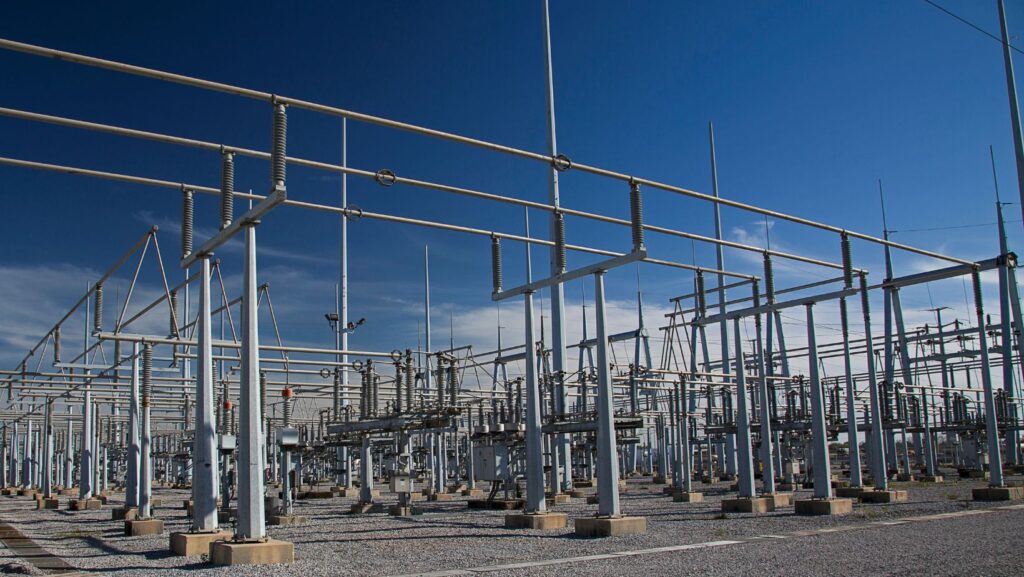Maintaining a stable and reliable power supply becomes increasingly crucial as our reliance on electricity grows. Whether you’re a homeowner concerned about power outages or an industry professional looking to optimize grid performance, understanding how voltage stability is improved in electrical grids is essential. So, how does STATCOM improve voltage stability in electrical grids?
STATCOM improves voltage stability by rapidly injecting or absorbing reactive power to maintain voltage levels within acceptable limits. It responds to millisecond voltage fluctuations, providing dynamic support to the grid and enhancing its overall stability.
While this brief explanation gives you a general idea of how STATCOM works, there’s much more to explore about its functionality and benefits. Understanding the intricacies of STATCOM’s operation can help you appreciate its role in modern power systems and how it contributes to a more reliable and efficient electrical grid. Let’s dive deeper into the world of STATCOM and voltage stability.
What Are The Key Components Of A STATCOM System?
To fully appreciate how STATCOM improves voltage stability, it’s essential to understand its key components. At the heart of a STATCOM system is a voltage source converter (VSC), which uses power electronic devices like insulated-gate bipolar transistors (IGBTs) to convert DC to AC power and vice versa. This converter is connected to the grid through a coupling transformer, which helps match the voltage levels between the STATCOM and the power system.
Another crucial component is the DC capacitor, which acts as an energy storage device and helps maintain a stable DC voltage for the converter. The control system is the brain of the STATCOM, continuously monitoring grid conditions and adjusting the converter’s output to maintain voltage stability. Finally, cooling systems and protective equipment ensure that STATCOM operates safely and efficiently under various conditions.
Understanding these components helps explain why STATCOM can respond quickly to voltage fluctuations, making it an invaluable tool for maintaining grid stability.
How Does STATCOM Compare To Other Voltage Stability Solutions?
While STATCOM is an effective solution for improving voltage stability, it’s not the only option available. Comparing STATCOM solutions to other technologies can help you understand its unique advantages and potential limitations.
One common alternative is the static VAR compensator (SVC), which uses thyristor-controlled reactors and capacitors to support reactive power. While SVCs are generally less expensive than STATCOMs, they have a slower response time and are less effective at low voltage levels. This makes STATCOM particularly valuable when rapid response is crucial, such as during severe grid disturbances.
Another option is the synchronous condenser, essentially a synchronous motor running without a mechanical load. While synchronous condensers can provide reactive power and inertia to the grid, they have higher maintenance requirements and slower response times than STATCOM.
STATCOM’s ability to maintain its full reactive power output even at low voltage levels gives it an edge in many applications, particularly in weak grids or areas with high renewable energy penetration.
What Are The Future Trends In STATCOM Technology?
As power systems evolve to accommodate more renewable energy sources and face new challenges, STATCOM technology is also advancing to meet these changing needs.
One significant trend is the development of multi-level converter topologies for STATCOM.

These designs can handle higher voltage levels and provide better power quality with reduced harmonic distortion. This makes them particularly suitable for high-voltage applications and integration with large-scale renewable energy projects.
Another exciting development is the combination of STATCOM with energy storage systems, creating what’s known as E-STATCOM. By adding battery storage or other energy storage technologies, E-STATCOM can provide both reactive and active power support, enhancing grid stability even further. This capability is especially valuable in microgrids and systems with high renewable energy penetration, where power fluctuations can be more pronounced.
Lastly, advancements in control algorithms and wide-area monitoring systems enable STATCOMs to operate more efficiently and coordinate better with other grid devices. These improvements allow for more optimal use of STATCOM resources and better overall grid performance.
What Are The Challenges In Implementing STATCOM In Existing Power Systems?
While STATCOM offers numerous benefits for voltage stability, integrating this technology into existing power systems can present several challenges. One of the primary obstacles is the high initial cost of STATCOM installations. The advanced power electronics and control systems required for STATCOM operation can make it a significant investment, particularly for smaller utilities or developing regions.
Another challenge lies in the complexity of STATCOM control systems. Proper tuning and coordination with other grid devices are crucial for optimal performance. This requires specialized expertise and may necessitate additional training for utility personnel. Furthermore, integrating STATCOM into existing SCADA (Supervisory Control and Data Acquisition) systems can be complex, requiring careful planning and execution.
Space constraints can also be a concern, especially in urban substations where real estate is at a premium. While STATCOM generally has a smaller footprint than some alternative solutions, finding suitable locations for installation can still be challenging in some cases.
Lastly, there’s the challenge of justifying the investment in STATCOM to regulatory bodies and stakeholders. Quantifying the long-term benefits of improved voltage stability and reliability can take time, particularly in regions where power quality issues are not frequently experienced.
How Does STATCOM Contribute To The Integration Of Renewable Energy Sources?
The increasing adoption of renewable energy sources like wind and solar power has brought new challenges to grid stability, making technologies like STATCOM more crucial than ever. Renewable energy sources are often intermittent and can cause rapid fluctuations in power output, leading to voltage instability if not properly managed.
STATCOM plays a vital role in mitigating these issues. Its fast response time allows it to quickly compensate for sudden changes in power output from renewable sources. For instance, when a cloud passes over a large solar farm, causing a rapid decrease in power generation, STATCOM can instantly inject reactive power to maintain voltage levels and grid stability.
In wind farms, STATCOM can help meet grid code requirements for voltage support and fault ride-through capabilities. During periods of low wind, when the wind turbines are not generating much active power, STATCOM can still provide the necessary reactive power support to maintain grid voltage.
Moreover, STATCOM’s ability to operate effectively at low voltage levels makes it particularly valuable in weak grids, which are common in areas where large-scale renewable energy projects are often located. This capability allows for greater integration of renewable energy sources in regions with less robust power infrastructure.
By enabling higher penetration of renewable energy sources, STATCOM contributes to grid stability and the broader goal of transitioning to cleaner, more sustainable energy systems. As the world continues to move towards renewable energy, the importance of technologies like STATCOM in ensuring a stable and reliable power supply is likely to grow even further.
Taking the Next Step in Grid Stability
Now that you understand how STATCOM improves voltage stability in electrical grids and its importance in modern power systems, consider contacting your local utility company or energy provider.

Inquire about their use of STATCOM or similar technologies in your area’s power grid. This conversation can increase your awareness of local grid stability efforts and demonstrate public interest in advanced grid technologies, potentially encouraging further investment in these crucial systems.

